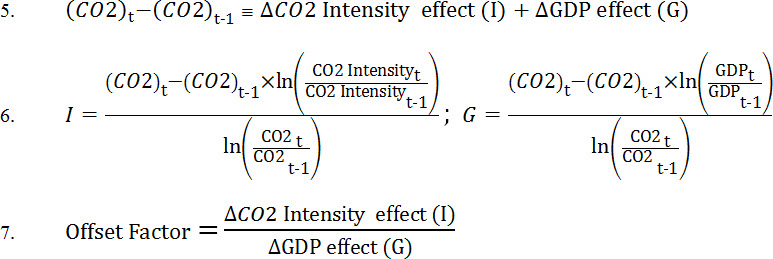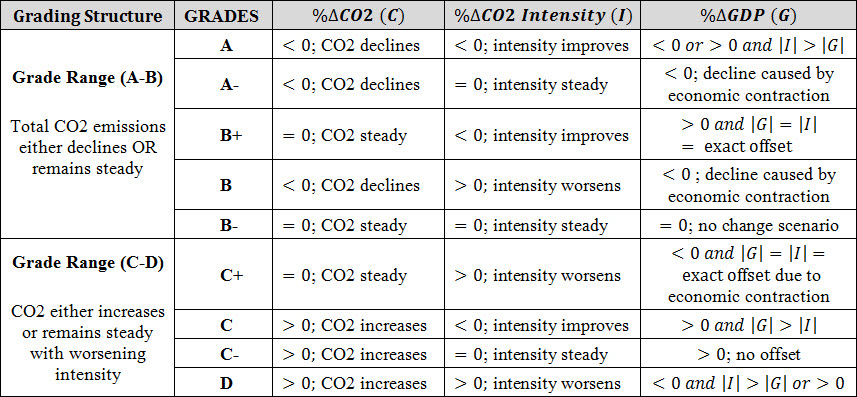CO2 Scorecard's Grading Methodology for the CO2 Trend Component
Written by: Shakeb Afsah • Apr 22, 2010
Topic: methodology
CO2 trend is the first component of the 3-letter grading system and it is determined by the combination of three factors: (1) the annual percent change in CO2 emissions, (2) the annual change in CO2 intensity and (3) the GDP growth rate of a country. The grading methodology is structured to ensure that a country where CO2 emissions decline is caused by economic contraction is not equated to the country where CO2 decline is driven by improvement in CO2 intensity. This approach creates incentives for countries to simultaneously reduce its annual CO2 emissions and improve the CO2 intensity of the economy.
The quantitative criteria for the grades for CO2 emissions trend can be derived from the well known Kaya Identity that expresses CO2 emissions from fossil fuel as a product of population, GDP per capita (income level), energy per unit GDP (energy intensity) and CO2 per unit energy (fuel mix). In an equation form, Kaya Identity can be expressed as:

For the purposes of the CO2 Scorecard grading, we are primarily interested in a simpler version of the Kaya Identity—one that expresses CO2 emissions as a product of the total GDP (the size of the economy) and CO2 per unit GDP (the CO2 intensity of the economy). Therefore, Kaya Identity can be reduced to:

The product form can be transformed into an additive form by taking the log of the above equation, and by differentiating it over time, the annual percent change in CO2 emissions can be expressed as a sum of percent changes in the size of the economy (the GDP growth rate) and the percent change in CO2 intensity of the economic system. This can be expressed as:

Further, the annual change in CO2 emissions can also be quantified using the decomposition technique of Logarithmic Mean Divisia Index-LMDI (Ang 2001, 2004). Using LMDI, the total annual change in CO2 emissions can be decomposed into the individual effects of CO2 intensity and GDP as shown by equations (5), (6) and (7):

Equations (4), (5), (6) and (7) were applied to the data of each country and the final grades were determined using the quantitative criteria shown below:

References:
Ang, B.W., Liu, F.L., A new energy decomposition method: perfect in decomposition and consistent in aggregation, Energy, Vol.26, No.6, 2001.
Ang, B.W., Decomposition analysis for policymaking in energy: which is the preferred method?, Energy Policy, No.32, 2004.
Kaya Identity: The internet has many references—type “kaya identity filetype:pdf” on Google to review some of these documents and reports.
more on methodology...